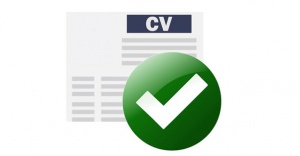Language/English/Vocabulary/How-to-Write-a-Good-CV
Translate:  Français Français
|
 English English
|
How you write a CV can vary depending on the type of job you're applying for and also the country in which you are located. With this in mind, the following are general tips that will help you build an effective CV. 📝
After mastering the art of crafting a good CV, you might also be interested in expanding your English vocabulary skills. Check out our lessons on commonly confused words like robber, burglar, mugger, and thief. You can also learn the difference between using "in the office" and "at the office" in various contexts. And if you're up for a fun challenge, try your hand at some English tongue twisters to improve your pronunciation and fluency. Good luck on your journey to mastering the English language! 🌟
Format[edit | edit source]
Unless you're applying for a job related to arts, you should keep the formatting simple. Remember, less is more.
Keep your CV to no more than one page. Most employers will not have the time to read more than one page, specially when they have a large stack of other CVs to read. You want your CV to be concise and not fill it with unnecessary words. The only time when it's acceptable to have a CV longer than one page is if you are applying for a senior-level job and you have more than decade of experience.
Use the same font style for all text. You will want to use a basic font style. If you're using Microsoft Word, for example, you can use Times New Roman or Calibri as your font style.
Don't use large font sizes. You will want a medium-small font size (10-12 points). This will give you more space on your CV and will allow you to fit more words on one page if necessary.
Don't use colors. Keep all the text in black or dark grey. Using colors can distract the reader from the actual content and it can take away from the professionalism of the CV.
Personal Information[edit | edit source]
Your personal information should go at the very top of the CV as this will be the header.
Name. Your full name should be the first line of your CV and it should be in bold. If you have a middle name, you will want to include the initial (e.g. John A. Smith).
Email. The email should be professional. The last thing you want to do is to include an email with a funky name (e.g. MrSuperman@gmail.com). This will look unprofessional to the employer and this is one of the first things they will see since this will go at the top of the CV under your name. If you don't have a professional-looking email, make sure to create one.
Telephone. A personal phone number is preferable to make it easier for employers to get in touch with you.
Address. Complete address of residence.
Any other personal information should not go on a CV. Also, do not include a personal photo unless specified by an employer. This is not mandatory and the employer should keep an unbiased point of view when looking at CVs.
Education[edit | edit source]
This will be the first section of the body of the CV, under the header. You should list all educational institutions you have attended based on your level of education. For example, if you attended a university, it's not necessary to list your high school.
Institution. If you attended more than one, the last one attended should go first in the list (e.g. Florida International University).
Years attended and location. On the right side of the institution, you should include the years you attended and the location below that (e.g. 2006-2010... Miami, FL).
Program. This could also be the area of study (e.g. Bachelor of Business Administration).
Degree. You can list your degree obtained, specialty, or type of diploma received (e.g. International Business, and Management).
You can also list any affiliations or clubs you were a part of throughout your educational career (e.g. Member of the French Club, President of the Colombian Student Association, etc).
Experience[edit | edit source]
This is the main section of your CV and it should contain the most information out of all other sections. If you don't have any work experience, don't worry. You can list your experience throughout your educational career and any experience obtained from extracurricular activities such as volunteer work, sports, organizations or groups you were a part of, etc.
Company/organization. The most recent company you worked for should go first in the list.
Years worked and location. On the right side of the company, you should include the years you attended and the locations below that (e.g. 2013-2018... Los Angeles, CA).
Job title. Here you may list your job title and, in some cases, you may list the department (e.g. Data Analyst, Technology).
Description. This part can be optional. You can give a brief summary of what you did when you had a certain position (e.g. Collected data to analyze it and create performance reports). If you include a description, it should be short and no more than one sentence.
Job tasks/responsibilities. This is the key part of the CV; it's where you point out everything you accomplished in your previous jobs. You should list each task/responsibility in a bullet list. Each point should start with an action verb in past tense. If you're still employed at a particular job, you can list the action verbs in present tense. Keep each bullet point concise and straight to the point. Exclude any job tasks that are not important or relevant (you don't need to mention that you checked emails every day at your previous job). Instead, you can focus on your accomplishments and how you made a difference at your previous organizations. Also, feel free to add numbers. Adding numbers can help quantify your accomplishments and tasks, giving the employer a good idea of how productive you are. Numbers also capture the reader's eyes since they look like capital letters. It makes your CV a little more memorable. The following is an example of a list of job tasks/responsibilities:
- Provided sales director with 3 sales reports per week derived from consumer trends
- Collected data from 5+ sources to ingest into 2 databases
- Helped increase sales by 10% in one month by providing insights from analyzed data
Keep in mind that this section is NOT supposed to tell all your work history. Employers are not interested in knowing everything you did in the past. Only include what is relevant and all the past experience that will help you get to your professional goals. If you are looking to be an engineer, you don't need to include a job you used to have at a restaurant for example. This section is meant to capture the employer's attention and get you an interview. Once you are at the interview, you can talk about all the things you've done if you want. No need to do this on the CV.
Skills & Additional Information[edit | edit source]
This section should be mainly to list the skills that are pertinent to the job you're applying for. Just like in the previous section, there's no need to list all your life skills. If you want to be an engineer there's no need to list your ability to cook perfect pasta. Depending on the type of job you're applying to, you may want to list technical skills (e.g. Advanced Microsoft Excel proficiency, intermediate Microsoft PowerPoint proficiency) or non-technical skills (e.g. ability to make fresh pasta, experience making pizza in a clay oven).
It's a good idea to list the skills you're interested in obtaining as well. Even if you have no experience in certain things, at least it lets employers know that you have an interest. Very often employers will be impressed by people who show interest in learning new skills.
And feel free to add something personal at the end of this section. It will be the last thing the employer reads on the CV, so you can give it a personal touch. For example, you can mention your love for Italian cuisine or even the passion for your favorite basketball team! This will make your CV different and it will make the employer remember it.
References[edit | edit source]
References are usually optional. Nowadays it's very common not to include them on your CV. Employers will ask for references if they're interested in them. In such case, you would provide your references separately.
Videos[edit | edit source]
How to Write a CV in English | Applying for a Job in English - YouTube[edit | edit source]
Other Lessons[edit | edit source]
- Art
- Although, though, but and however
- What is the most Beautiful Word
- Diminutives
- Top 1000 Gift Ideas
- Numbers
- Common Acronyms Social Media SMS
- At Home
- Animal Sounds
- Makeup



